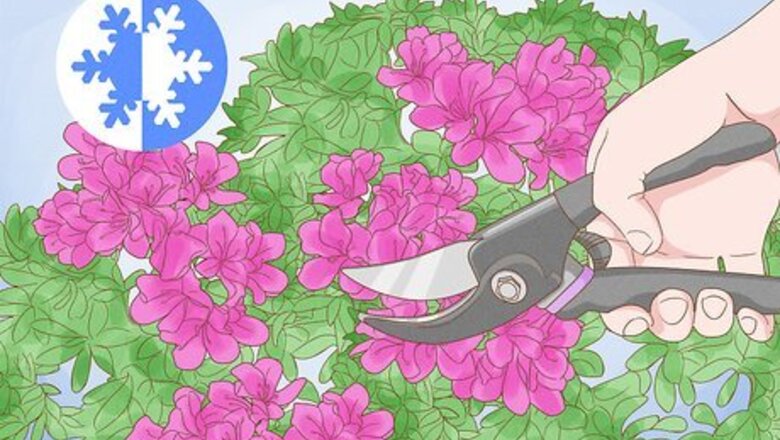
views
Leveling Shrub Height
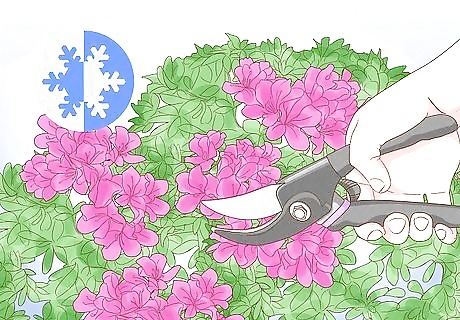
Examine your shrub for blooms to determine when you should trim it. For blooming shrubs, trim them in the winter when they're dormant to prevent stunting flower growth. You can trim non-flowering shrubs anytime except late autumn when any new growth the plant has after trimming won't have time to mature before it goes dormant. If you're growing a hedge, trim it when the branches look overgrown until about 6 weeks before your area's usual first frost. Avoid doing extensive trimming when it is not your shrub's trimming season. Light trimming to keep it from looking overgrown is fine, but too much may damage your plant.
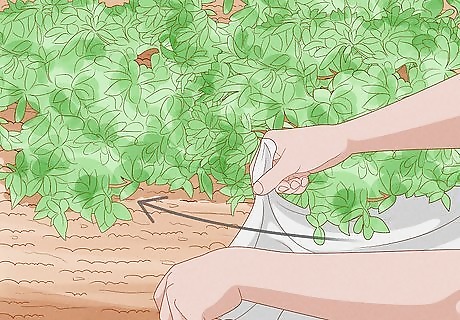
Lay a tarp around the shrub you trim. This will make cleanup easier and catch any small branches or leaves that fall on the ground. If you're trimming multiple shrubs, clean the tarp off and move it around as you work through the different shrubs.
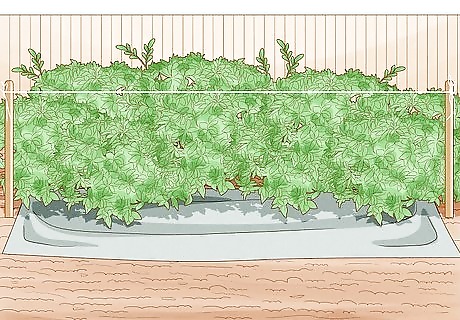
Use 2 stakes as a guide while you level the shrub. Set up 2 stakes on each side of the shrub and tie a string between them. Keep the string taut and use it as the height that you'll trim the shrub to. If you want an especially precise measurement, use a level to position the strings to make sure they are even. If the shrub is small and close to your home or siding, you could also use either as a leveling guide as you cut.
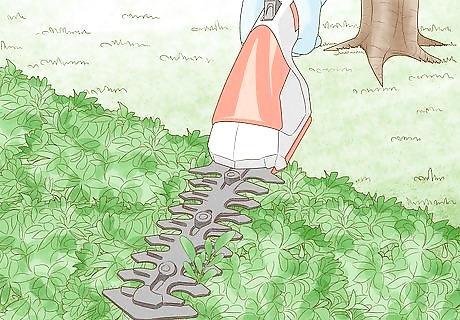
Use your shears or a hedge trimmer to cut along the top. Avoid cutting below the guideline to keep your leveling job even. When you've finished trimming along the top, examine your work. Check for and cut away any remaining branches that seem out of place. A hedge trimmer is ideal for cutting the shrub's height because running it over the top will give you a smoother finish.

Keep the top narrower than the base. The base of your shrub should be the widest part of the plant. Examine the shrub after you have made the top even. If your shrub seems top-heavy, use your shears or hedge trimmer to make it thinner.
Trimming Shrub Sides

Keep the shrub's sides 6–12 inches (15–30 cm) inches away from your home. This will keep the plant from rubbing against your home's walls, which prevents scratches in your siding. If your shrub currently brushes against your home, measure 6–12 inches (15–30 cm) out and mark the distance you will cut it away from your home. Because plants need water to survive, any shrubs touching your home could cause water damage over time.
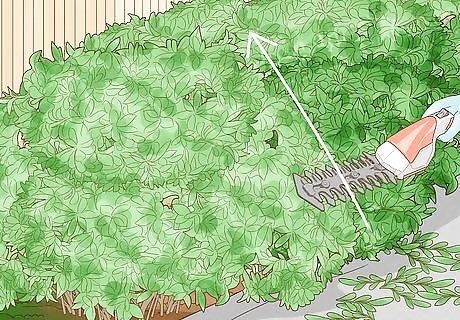
Begin cutting near the bottom of the shrub and work your way to the top. Cut in smooth, even strokes to keep the shrub's sides even. As you cut, keep the base wider than the rest of the shrub to help the plant look balanced.
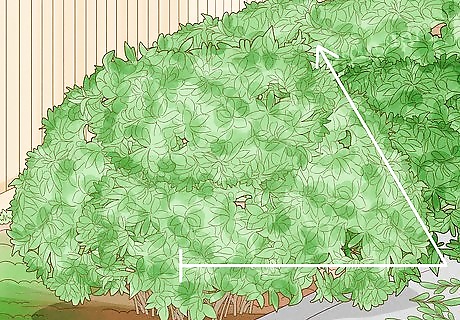
Cut the sides at a slight angle. This will help keep the plant narrow at the top and wide at the bottom. If the plant is widest at its bottom, sunlight will be able to reach the lower branches and maintain the leaves' green color.

Make shallow cuts as you work your way up. Avoid cutting too deeply as you work. Remove 1–3 inches (2.5–7.6 cm) at a time, particularly from the base, to prevent trimming away too much. You can always cut more later if you're unsatisfied with the shrub's shape. Try to retain the shrub's natural shape as much as possible to keep it healthy.

Examine the sides for uneven areas when you're finished cutting. Check the shrub's overall shape and look for any branches that stick out. If you spot unruly branches or feel that the shrub looks uneven, make adjustments with your shears until the plant looks even and balanced.
Removing Dead, Diseased, or Overgrown Branches

Cut away the thickest overgrown branches first. Use your shears or a hedge trimmer to cut unruly branches back from the base. This will prevent overgrown branches from sticking out too far and promote new side growth.
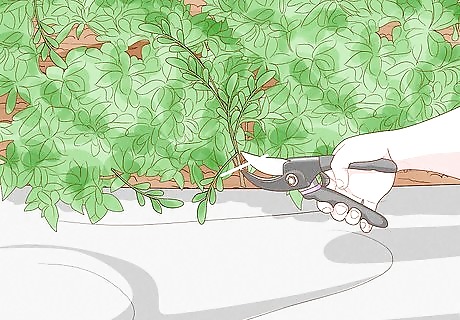
Clear out some limbs near the center. If your shrub has multiple overgrown branches around the center, cut several back to the base with your trimmer. As you clear limbs, try to retain the plant's natural shape and keep the base the widest part. Thinning out the center will help light reach the bottom branches. Avoid cutting center branches that aren't overgrown, as trimming too many main branches can harm shrubs.

Remove diseased or damaged branches or branch segments. Inspect your shrub for sick-looking or broken branches, which must be removed to retain the plant's health. Cut away any rotten parts of the branch until you reach healthy wood. If part of a branch is healthy, you do not need to remove it in its entirety. Just remove as much of the dead or unhealthy section as possible. Research common pests or diseases your shrub might suffer from and keep an eye out for early signs of damage.
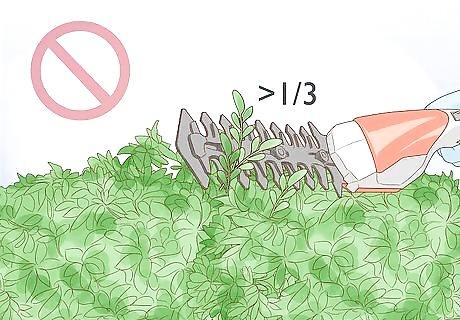
Do not remove more than 1/3 of the shrub. Cutting more than 1/3 of the plant makes it weaker and vulnerable to pests or diseases. If you feel like you might be over trimming the plant, smooth your work out as best as you can and finish trimming the shrub.

















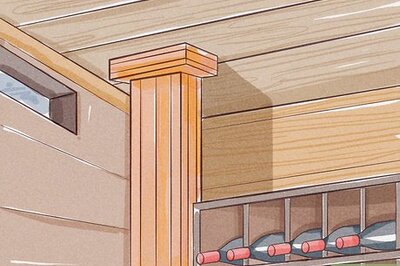
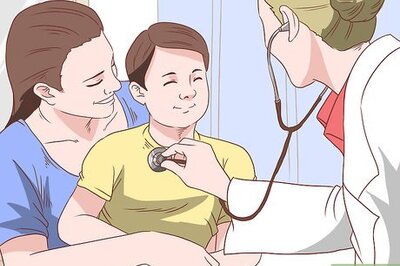
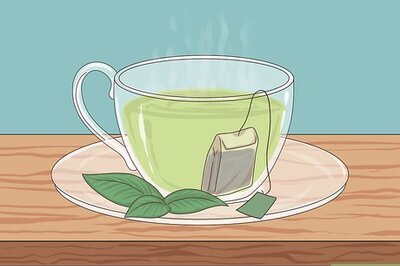
Comments
0 comment